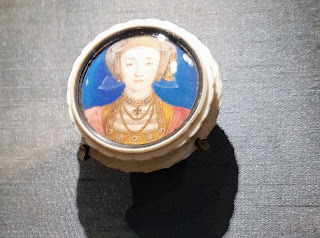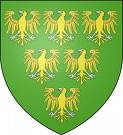This day, of course, marks the anniversary of Piers Gaveston. I’ve really neglected this blog this year. Not because of a wane in my interest, but because there has been a lot going on, and there is nothing new to add. Kathryn Warner’s excellent blog on Edward II contains everything you need to know about Piers Gaveston. But I couldn’t let this day pass without remembering Piers and what happened to him. RIP Piers Gaveston.
Thursday, 19 June 2025
Friday, 20 December 2024
Monday, 25 November 2024
November 1307 marriage of Piers Gaveston and Margaret de Clare.
November 1st 1307 was the anniversary of the wedding between Piers Gaveston and Margaret de Clare, niece of Edward II. Margaret was the second daughter of Gilbert de Clare and the daughter of Edward 1st, Joan of Acre. She had 2 other sisters, and her elder sister Eleanor was married to Hugh Despencer, and at this time, there was no attachment between Edward II and Despencer. This was Edward's way of bringing Piers into the Royal family. The Vita Edwardi Secundi says it was Edward's aim to 'strengthen Piers and surround him with friends '. At the time of her marriage , Margaret was only 14, and would have had very little say in the marriage. Margaret’s thoughts on her marriage are not recorded, but she may well have been pleased with her Uncle’s choice. Chroniclers describe Piers as elegant and graceful. Edward 1st was said to have chosen Piers as an ideal role model for his son , with a chivalrous attitude and impeccable manners. The marriage would have given her access to the king and with her husband created an Earl, Margaret would have been made Countess of Cornwall. The marriage took place at Berkhamsted Castle, and the King and some of the nobles attended. The couple were given jewels and the king arranged for almost £8 in pennies to be thrown over the happy couple. There was a lavish celebration and afterwards, a tournament was held at Wallingford at which Piers and his knights excelled. It was an excellent match for Margaret, and whatever her feelings, she would have done her duty.
Tuesday, 15 October 2024
The tomb of Sir Thomas Boleyn

The sign outside the church, announcing the grandfather of Queen Elizabeth 1st rests within.
Tuesday, 3 September 2024
More from the Six Lives exhibition
Thursday, 15 August 2024
Tudors, Tudors, everywhere.
I think everyone with an interest in history knows the Tudors are top of the tree. So many books, articles and tv dramas or documentaries. This year there has been an exhibition of the work of the artist Hans Holbein, Henry VIII’s painter. At the present time, the National Portrait Gallery has an exhibition called Six Lives - the stories of the six wives. I’ve been to both. The Holbein exhibition was outstanding, to see the originals of Holbein’s sketches was amazing. However, I don’t feel quite the same about Six Lives.
Six Lives costs £21 plus a donation to the NPG. Highlights for me were the small charm whistle and cosmetic attachments that Henry VIII was said to have given Anne Boleyn, the original bronze medal of Anne Boleyn from 1534, and documents from the National Archives. These had been borrowed from other museums, and there were other items borrowed from colleges and a few from private collectors. The vast majority of the portraits, however, were from the NPG’s own collection, which you can usually see for free whenever you want. That’s the issue for me - £21 is an awful lot of money to pay for most of the exhibition you can see for free. The exhibition runs until September 8th. If you can’t visit then, or are put off by the price, just remember you can see most of the portraits for free at the NPG.
Below, miniature charm given to Anne Boleyn























